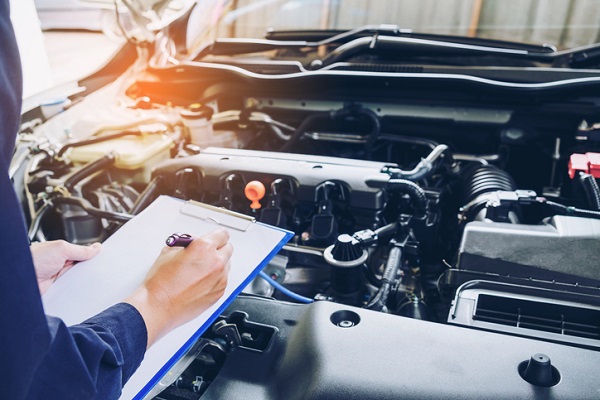Conveying the Benefits of a Radiator Flush During Your Automotive Service Advisor Career

Over miles on the road, a vehicle’s cooling system will collect sediment and rust. This buildup, which prevents the proper circulation of heat-dispersing antifreeze, can cause engines to overheat and fail. As automotive experts know, the solution is often as simple as regular radiator flushes. Most effective at yearly intervals, these flushes clean away corrosive buildup in the engine’s radiator, pumps, and gaskets. While drivers are familiar with the sight of stalled vehicles and smoking engines, they can still feel hesitant about spending on all-important preventative flushes to help prevent a breakdown while on the road.
So, how do you convey the importance of radiator flushes during your career as an automotive service advisor? Keep reading to find out.
The Customer Needs to Know the Risks of Poor Engine Cooling
Many drivers are uninformed about engine cooling problems. That’s why alerting them to the risks they pose can help you schedule flushes during your service advisor career. Discussions of rust and sediment buildup should always lead back to the consequences of poor cooling, which include costly damage and, in some cases, complete engine failure.
Service advisors should also detail exactly how regular flushes eliminate these risks. Whereas ‘draining’ only removes half of the cooling system’s antifreeze, a thorough ‘flush’ removes it all, replacing it with new antifreeze and an anti-corrosion conditioner. Greater awareness of risks and benefits can lead drivers to schedule a radiator flush on the spot.
The Long-Term Cost Argument Is Important for Your Service Advisor Career
Drivers are most likely to resist regular radiator flushes on cost/benefit grounds. As service advisors know, clients concerned over small, routine expenses must be made aware of long-term costs incurred through neglect. Ranging from $30 to $150, radiator flushes will save car owners from the chronic financial woes of engine failure. Service advisors should leverage their expertise, explaining how flushing can help prevent further costs down the line.
Conveying the importance of an engine flush can also mean breaking down the composite costs of cleaner, conditioner, and new coolant. For anyone launching an automotive service advisor career, cost analysis skills will help impart the importance of various maintenance procedures.
Drivers Should Know the Added Benefits of Radiator Flushing
The thought of a smoking engine might be what ultimately convinces clients to get a radiator flush. But beyond protecting against this worst-case scenario, the procedure has other important benefits for a vehicle’s performance. For winter drivers, these flushes reduce the inconvenience of having their engine stall in the cold. Regular radiator maintenance can even silence pesky engine noise, allowing for smoother and more reliable driving.
Your future clients should know that a thorough engine flush does not just treat the radiator, but also the adjoining hoses, pipes, gaskets, and pumps. With water pumps especially, flushing helps with lubrication to ensure optimal durability. When performed properly, the procedure is an opportunity to check for all engine cooling issues, including potential leaks that may cause headaches down the road.

Contact Automotive Training Centres to find quality automotive courses in Canada.

